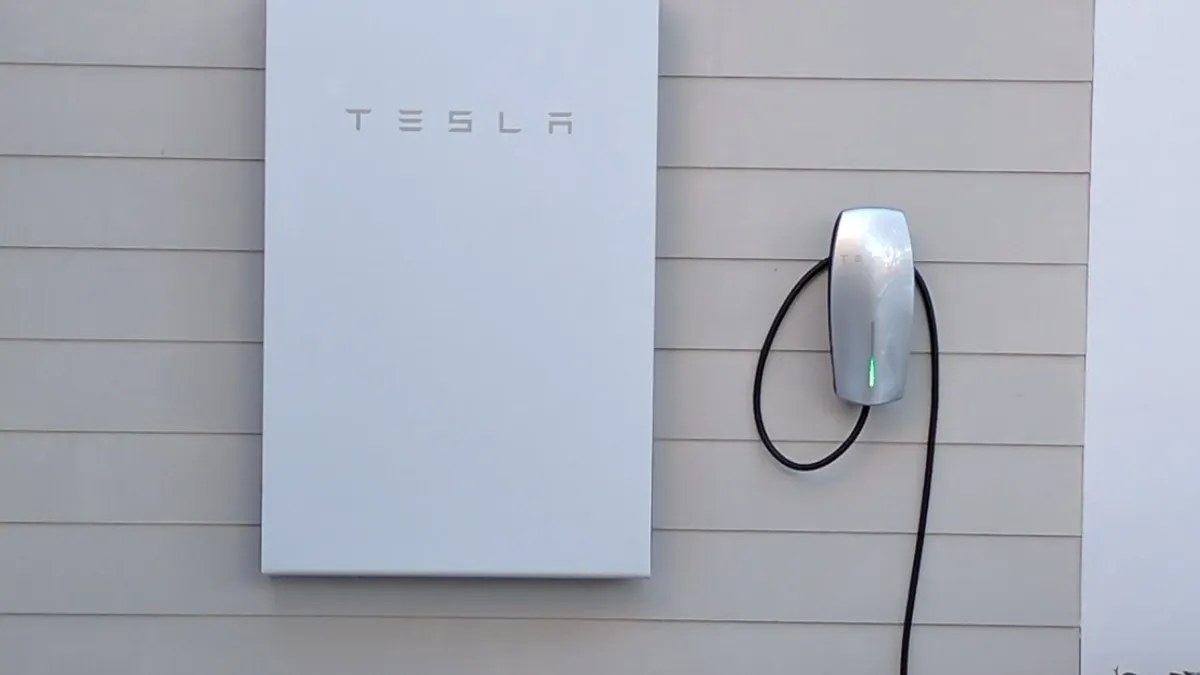Another academic study is challenging the economics of pairing rooftop solar panels with behind-the-meter energy storage.
The study, by Eric Hittinger and Jawad Siddiqui for the Rochestor Institute of Technology, was published earlier this month in Utilities Policy. It follows on the heels of a study in Nature Energy that said storing solar power can increase energy consumption and emissions levels.
Hittinger said his study was undertaken as a reaction to the media coverage in the wake of the unveiling of Tesla’s Powerwall residential battery. The study also takes on recent studies by the Rocky Mountain Institute that have predicted that solar-plus-storage systems will reach grid parity and defection will become an increasingly popular option.
Hittinger and Siddiqui used a combination of weather data from the National Renewable Energy Laboratory and energy demand data from the Department of Energy to model energy use for one year at 1,020 simulated houses in locations all across the country. All of the houses were assumed to already have a rooftop solar system scaled to annual energy consumption of the house. The modeling was done using both Tesla Powerwall batteries and traditional lead-acid batteries. The cost basis for the Powerwall battery was $350/kWh.
Inside the study
It became apparent in setting up the models that the solar-plus-storage system of the off-grid house would have to be significantly overbuilt to meet 100% of energy demand, resulting in high costs. So the researchers assumed a 25% reduction in energy usage for households wanting to go off grid. The 25% reduction could bring down costs by as much as 50%. For parity in the comparisons, they also assumed a 25% reduction in demand for the grid-tied houses.
In their results, Hittinger and Siddiqui presented a variety of scenarios measured in the net change in the levelized cost of electricity (LCOE). Their results show that a $2/watt grid-tied, rooftop solar system with net metering available makes financial sense in many locations across the United States.
If storage is added to that system, the LCOE rises substantially. In their next scenario, they show the effect of taking a solar-plus-storage system off grid, assuming net metering is available. Under those circumstances, going off-grid increases the LCOE by $0.23/kWh on average, which more than doubles the cost of electricity for an average home. If the same scenario is run without net metering, the high capital cost of batteries still outweighs the value of curtailed solar power, except in Hawaii and in parts of California, particularly in and around San Diego.
Hittinger and Siddiqui also took into account that utilities sometimes charge fees for connecting solar power, so they also took that scenario into account. They found that with net metering fees would have to be $1,800/year on average to justify an off-grid system. If net metering is not available, that falls to $1,300/year. Both figures are far higher than the average total electricity bill which is about $100/month.
Overall, the researchers found that for grid defection to make sense, a customer must face high electricity bills and unfavorable net metering or feed-in policies. But they point out that many places that have high electric rates also have robust net metering policies. Hawaii, which rescinded its net metering program and replaced it with two interim on-grid and off-grid options, is the exception.
For most customers, what makes most sense it to use the grid as a “zero capital cost” storage device, they said.
In a location with net metering, a grid-tied rooftop solar system is “an infinitely large battery,” said Hittinger, who is an assistant professor in the department of public policy at Rochester Institute of Technology. Even if there is a utility fee of $5 or $10 a month it is still “way cheaper than buying a battery.”
Hittinger concedes that the study was designed test grid defection, and it focuses on a narrow use-case for storage that is not necessarily the way storage would be used.
Hittinger also notes that the paper does not address using a solar-plus-storage system for arbitrage, which is storing solar power during the day and discharging the battery in the evening to offset peak rates. The key to making that type of arbitrage work is rate structure such as time-of-use rates, which aren’t very prevalent right now, he said. He also notes that would be the opposite of how arbitrage would usually be conducted: to charge batteries during off peak and discharge them during peak periods.
Hittinger and Siddiqui conclude that “grid defection is generally an inefficient use of resources.” Lower solar panel and battery prices could make grid defection more attractive, they say, but that assumes that utilities will not adapt.
“If it makes financial sense for a for a customer to buy a solar/battery system and defect from the grid, it should be even more economical for the utility or a third-party company to buy, install, and operate these systems at or near that home.”






















